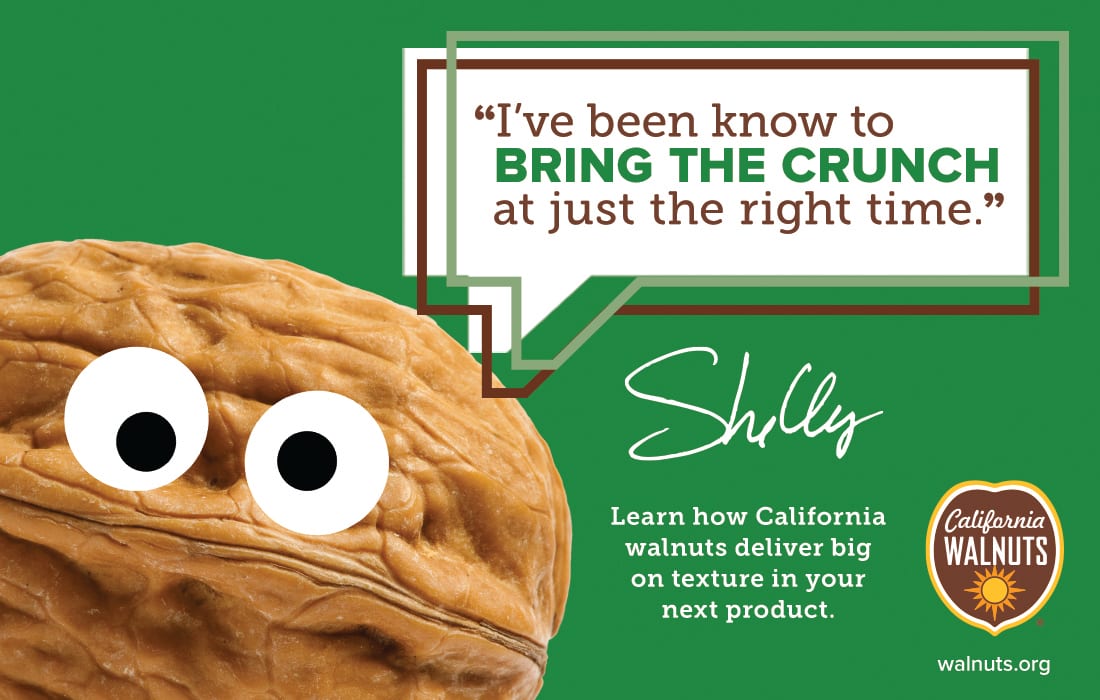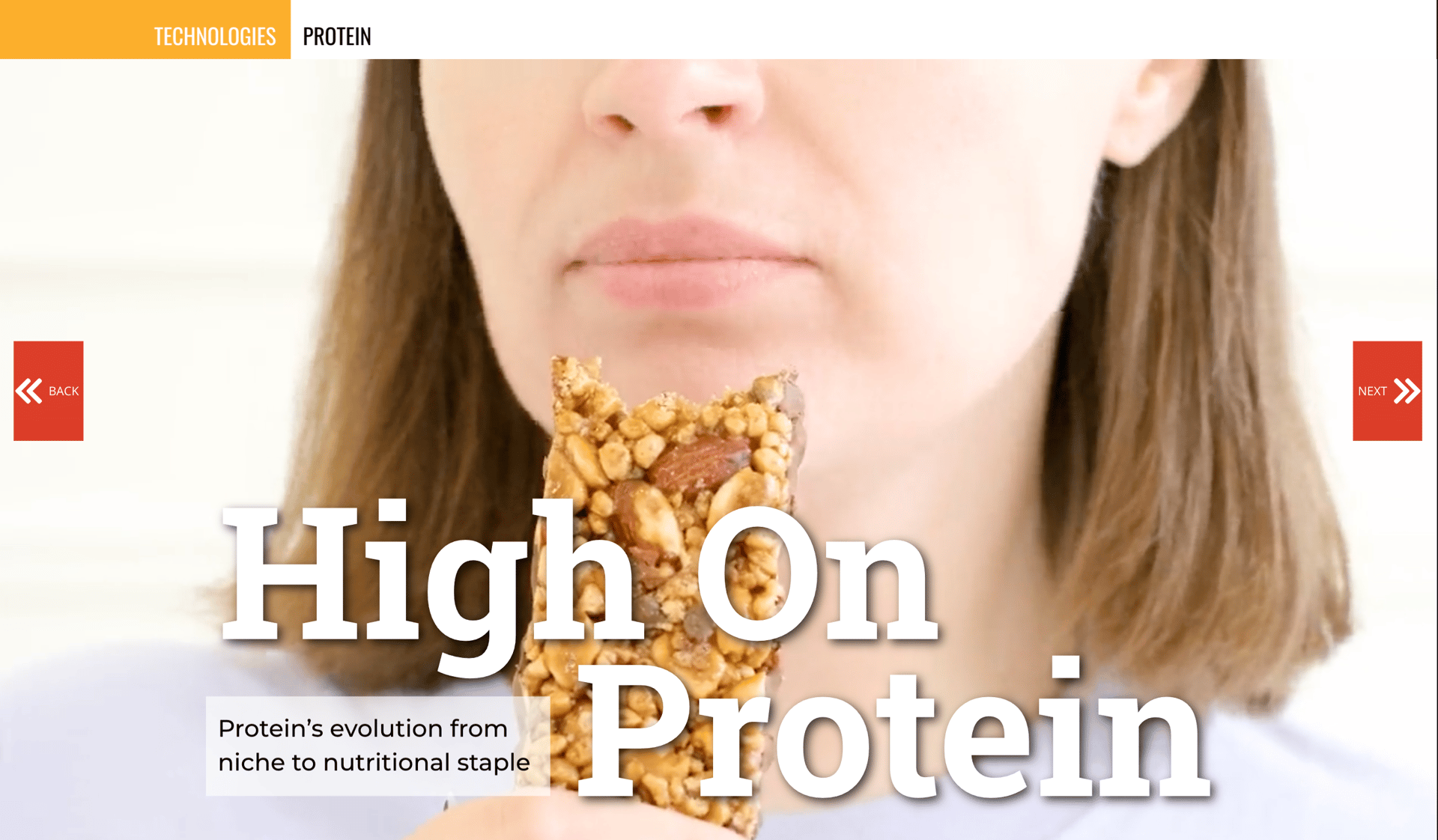FOCUS ON TEXTURE
Technologies
Consumers love flavors that have “crunch,” from the snap of a salty snack to the sweet crunch in fillings, coatings, snacks, and confections.
Time!
Crunch
By Erin Costello
By Jill Beaverson
The association of crunchiness in foods with pleasant childhood memories stimulates the release of dopamine to elicit feelings of pleasure.
Video credit: vladias / Getty Images Plus
While flavor is the overriding key to a food’s popularity, the main selling point world-famous snack food brands use to market some of their most popular product lines takes a back seat to that most popular texture, “King Crunch.” Crunchiness is “the music of mastication,” according to aroma and flavor researcher Alan Hirsch, M.D., as quoted in the article, “The science behind why we crave loud and crunchy foods” (by Jake Rossen, MentalFloss).
Food scientists have long recognized that crunch is something more than a texture; it has the power to affect how we interpret flavor. Crunchy foods yield many sensations and experiences, and are psychologically rewarding on several levels. You get interesting sounds, tactile pleasure, and surprisingly, stress relief and reward. And for many consumers, those feelings have been driven by—and are reinforced by—memories of crunching on snack foods with friends and siblings as children.
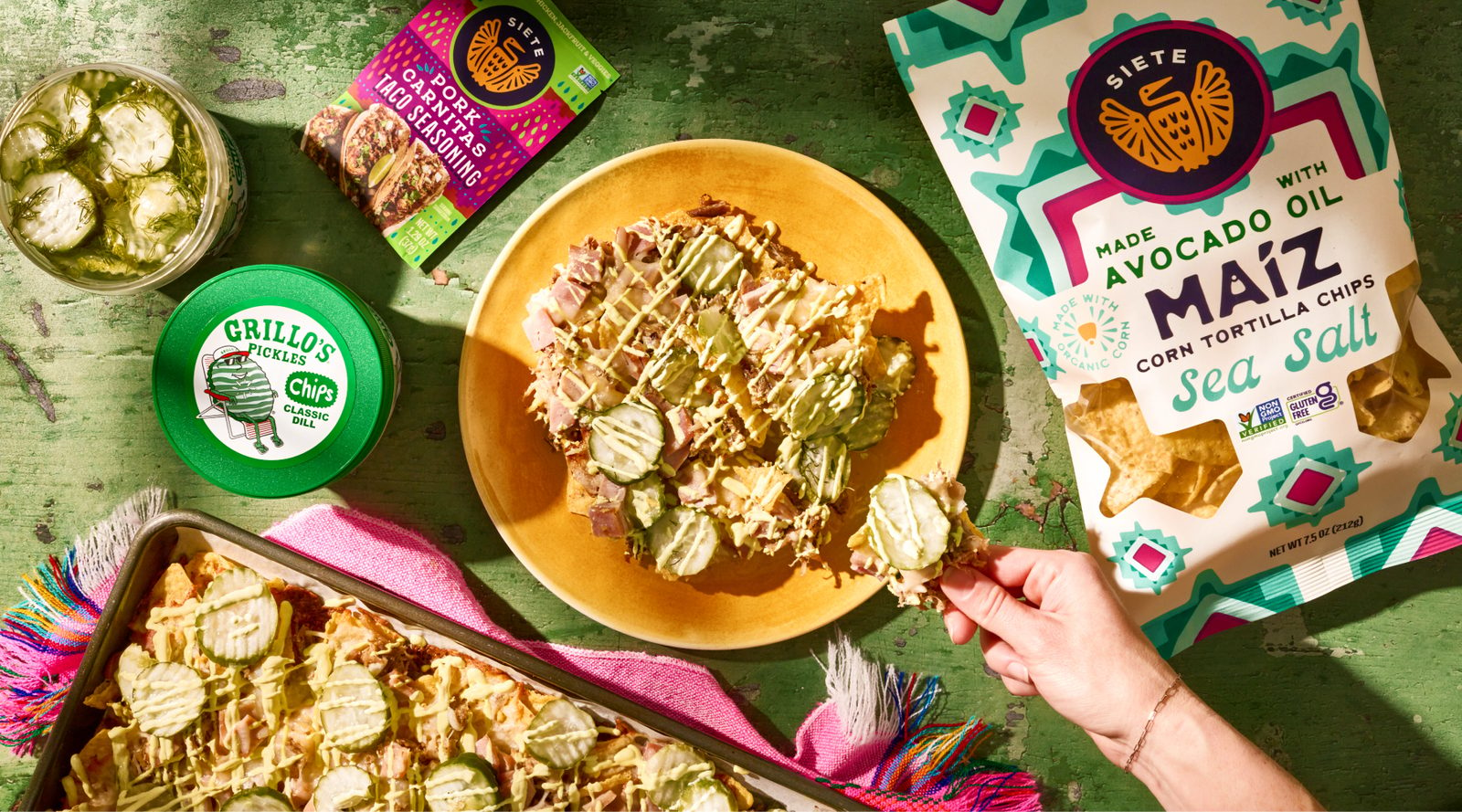
One way to improve on a classic favorite is to add a new ingredient to the base formulation, such including cassava flour in a tortilla chip. Credit: SieteFoods-PepsiCo.
Adding Punch to Crunch
Every crunch-making brand has its ways of enhancing the crunch in its munchies. Justin Spannuth, COO of the six-generation, family owned Unique Snacks, Inc. notes that the 104-year-old company follows the clean-made philosophy. “We take a longer time working with the dough,” he says. “Extra time leads to a better crunch. It’s an artisan approach as opposed to mass-produced.” Spannuth also notes that many pretzel makers include sugar in their formulations in order to feed the yeast. “That also results in less crunch,” he explains.
The sugar-free approach also sets Unique’s Extra Dark Splits apart from other dark baked pretzels, as does a longer baking process. The extra time also eliminates the bitter flavor that can result in pretzels that include sugar in the process.
Another technique Unique uses for crunch appears in the company’s sprouted product lines. “We procure a shelf-stable whole-grain flour that is sprouted by a process that copies Mother Nature as closely as possible,” he reports. “It’s a 100%, uncut sprouted wheat flour, and the result of the exclusive spouting process is that it germinates approximately 97% of the grains—a much higher percent than traditional sprouting. This significantly helps increase the crunch factor.”
Unique’s pretzels offer an authentic artisanal pretzel flavor, and are easy to crush for topical purposes, such as coatings and breadings, or even salad toppings to add a delectable crunch factor. “My cousin used crushed Original Splits pretzels as a cheesecake crust," says Spannuth. "It made the cake a phenomenal dessert with a crunchy, salty crust that paired perfectly with the rich, smooth, creamy, and sweet cheesecake filling.”
As a hobbyist chef, Spannuth points out that the crunch from the pretzels make an irresistible sweet and savory coconut pretzel crust for chicken, especially when paired with raspberry-butter dip.

Companies with generations in the crunch business are staying at the forefront by re-inventing and reshaping traditional approaches with new, crunchier twists. Photo courtesy of: Unique Snacks, Inc.

New technology, such as using light, is maximizing texture without adding or changing natural ingredients. Photo courtesy of: Pop Oats, LLC
Crunch Tech
Crunchiness is such a highly demanded snack food quality that one company, Pop Oats, LLC, patented its crunch technology with the USDA. The USDA's earlier work with mushrooms and ultraviolet light provided valuable insight that seeded work between Pop Oats and the USDA. The company’s public-private partnership yielded a new technique that Pop Oats is now commercializing with its crunchy, airy “toasted” whole oat kernel snack.
“Crunch is a big part of snacking,” says Rodger Morris, company co-founder. “My idea was to try to make oats into a portable, instant, on-the-go snack that wasn’t mushy like traditional oatmeal. I wanted to create something with that delightful crunch like other snack foods, but that was still healthy.”

Flipping some ingredients on their head, such as turning limp cooked pasta into crispy chips, brings flavorful whimsy to crunchy snacks. Credit: Bodden Bites, LLC
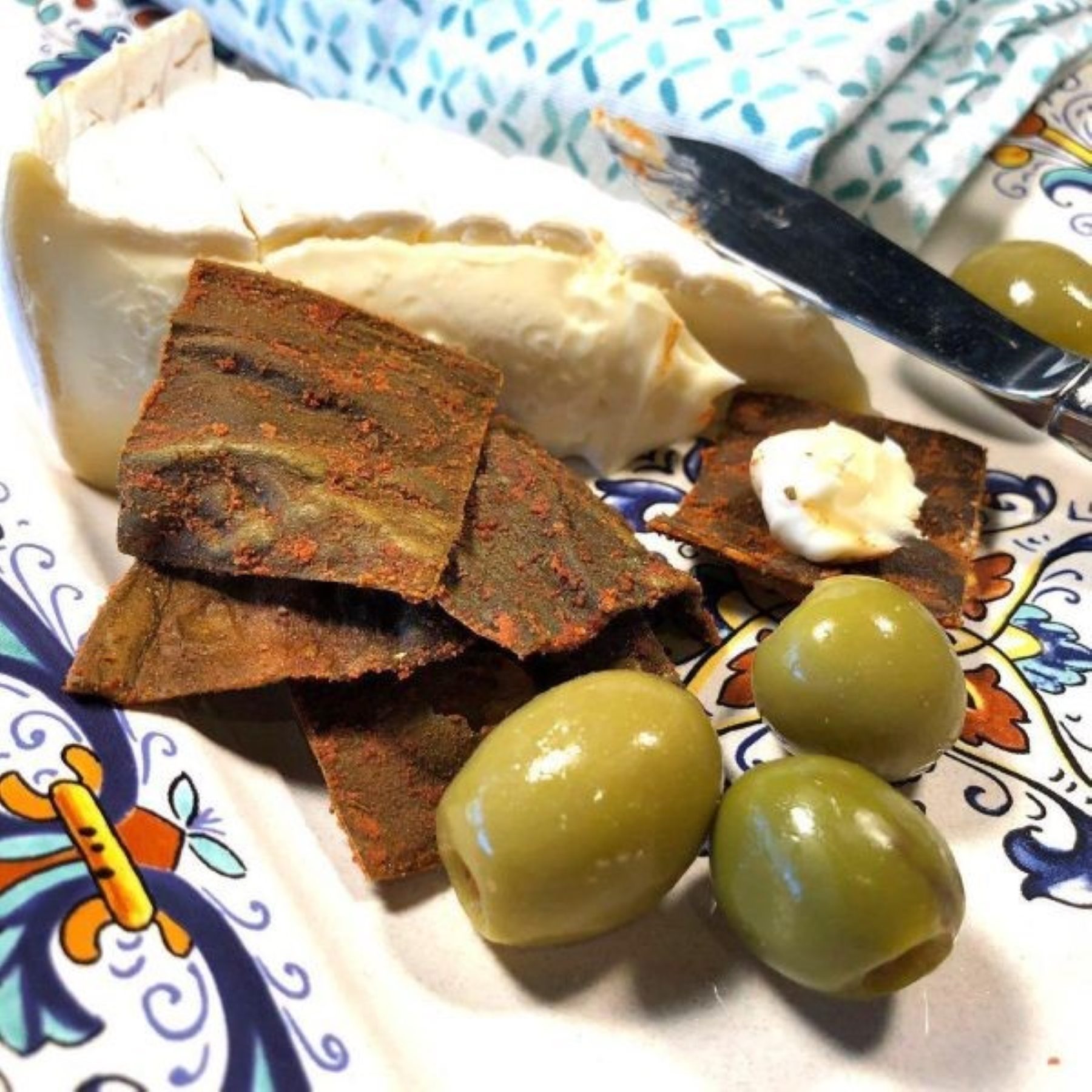
Creative product developers are taking traditional favorite ingredients and reimagining them in crispier new ways, such as umami-rich flavored kelp snacks. Credit: Snacks from the Sea Co.
As a now patented product, Morris admits that there was an immense amount of R&D that went into getting Pop Oats off the ground. “Two of our biggest challenges were devising a process for making the product and refining our production line for mass commercialization,” he explains. “Without any food science background, I was fortunate enough to partner with a great team at the USDA who saw my vision as an opportunity to expand Americans’ consumption of this awesome grain. Our public-private partnership created a truly innovative process whose utility goes far beyond just oats. While Pop Oats is the first product commercialized using our technology, we’re already beginning to explore how our method can be equally innovative in other areas of food as well. Regarding the challenge of mass commercialization, we had to custom design nearly every aspect of our production line. And although this took an immense amount of effort and creativity, we used the blank canvas to our advantage in designing a modular–and highly scalable–process that positions us well for future growth.”
Morris reveals that the company recently partnered with K-12 schools to have the snack added to their menus, as one of the five food groups mandated for nutritional purposes. Pop Oats come in five flavor combos: Swell Salted Caramel, Zesty Ranch, Wild White Cheddar (non-dairy), Chill-Out Chili Lime, and Simply Salted. Morris says school cafeteria teams have reported that the students “beg for Pop Oats,” so the brand might inspiring them toward healthy, crunchy snacking.
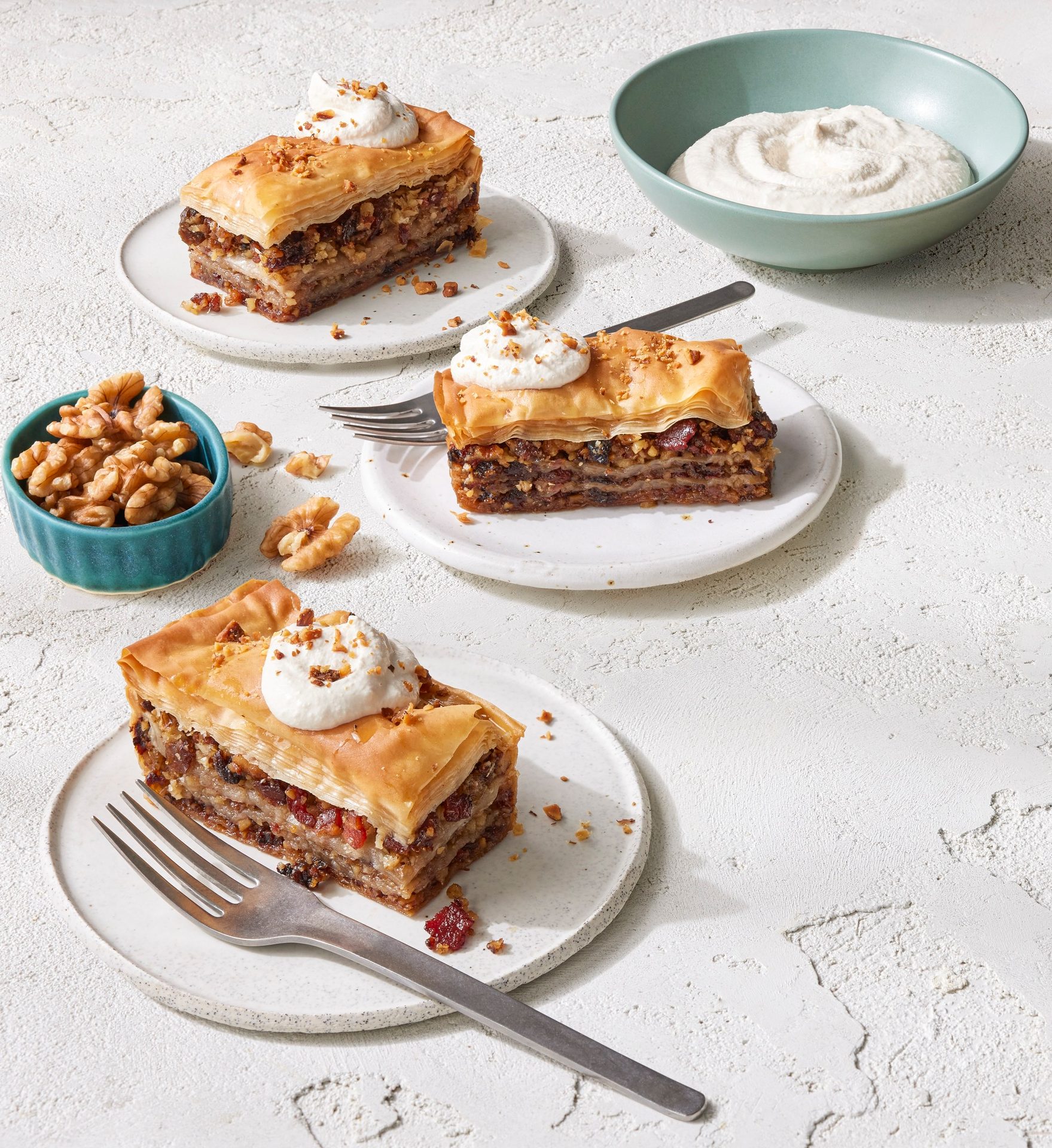
Nuts remain a classic—and healthy—favorite turn-to for crunchy fillings, coatings, and toppings. Credit: California Walnut Board
Mindful Noshing
The mouthfeel and acoustics of crunchy "nom noms" can make one be more conscious of their eating process, possibly yielding more mindful and cognizant eating. Plus, when the consumer slows down munching, it contributes to a sense of fullness. There also is a “chill factor” to crunching on a tasty snack. The physical aspect of chewing crunchy foods can help ease jaw tension and potentially lead to a calming effect. Overall, crunchy foods provide a multisensory experience. You get the tactile feel and flavor itself. Plus, sound: “Auditory input is highly important when eating,” says Lisa Duizer, PhD, professor of sensory science at the University of Guelph, Canada. “Sensory experts categorize this input into ‘crispy,’ ‘crunchy,’ and ‘crackly’ sensation. What more could you want from a food? Especially an inexpensive snack food?”
Just Nuts
In an article by FTP Research & Training Private, Ltd., “Crunch Time: The Role of Texture in Food Enjoyment,” the authors noted that “texture—the way food feels in our mouth—is just as crucial to creating a memorable eating experience.” They focused on the “interplay between texture and taste” and pointed out that texture “provides a tactile dimension to food that can significantly influence our overall eating experience.” The authors further explained that “the demand for snacks that provide a unique textural experience is growing,” citing as examples “air-popped chips, crispy-coated nuts, and layered cookies.”
Already prized for the flavor and nutritional halo they bring to foods, nuts are among the most common “turn-to” ingredients employed to bring in the power of crunch. They also have a long history of popularity in coatings. The textural range of individual nuts—such as the hard bite of hazelnuts, macadamias, and almonds or the firm give of softer nuts like pistachios, walnuts, and cashews—can particularly add to the overall organoleptic impression.
Nuts also have a singular advantage of providing a different kind of crunch when they’re ground and used as a coating in the place of breadcrumbs. Moreover, such coatings made from the firmer nuts, especially when coarsely ground, do not easily become soggy, retaining their crunch throughout the eating experience.
A Unique Approach to Crunch
Less Water, More Crunch
Daniel Herskovic, owner of Mayana Chocolate company, found some basic techniques for including multiple different kinds of crunch when creating his signature “Kitchen Sink” bar. The popular chocolate bar is stuffed with pretzels for a firm crunch, crisped rice for a light crunch, coarse sea salt for a concentrated crunch, and crunchy peanut butter for a softer crunch. It's one of a number of artisanal confections in which he brings together multiple textures. Herskovic revealed that the solution to crafting such a merger of textures into a single entity turned out to be somewhat simple: “We incorporate each crunchy thing in a fat-based filling. And, since there’s no active water in the chocolate enrobement itself, the different crunchy bits don’t get soggy, retaining their individual crunchy 'personalities'.”
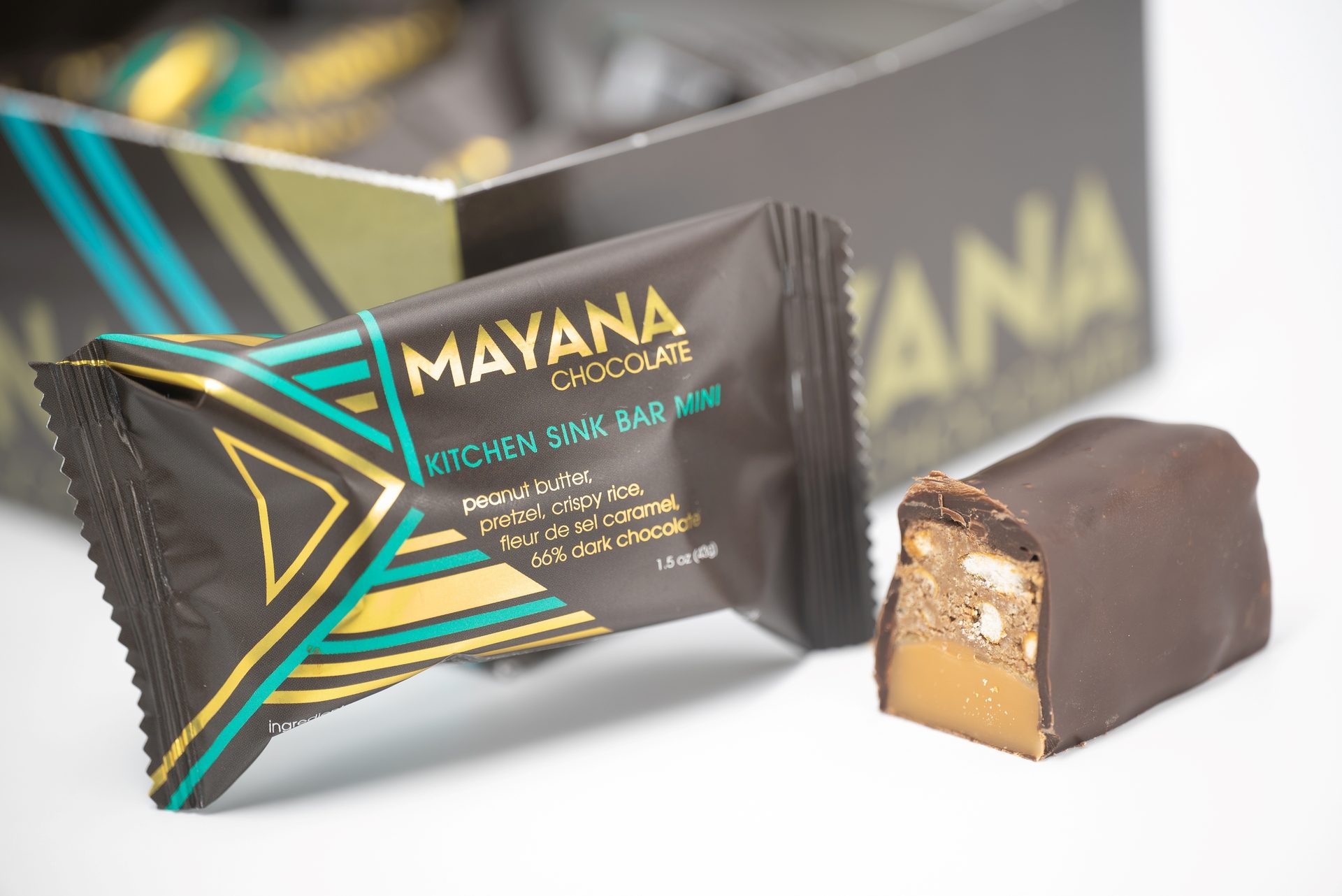
Artisan chocolate bars featuring several different ingredients with completely different types of toothsome crunchiness are excellent examples of how formulators are upping the crunch-filled confection game. Credit: Mayana Chocolate Co.
Crunchy Flashback
—excerpted and adapted from “Things That Go Crunch in the Night,” in Prepared Foods (July 2017).
The art to making crunchy foods involves understanding of different levels of crunchiness. “We have products in our Doritos line that we refer to as having a ‘tooth-rattling’ crunch,” says Ngoc Trinh, now Executive Research Chef for PepsiCo/Frito-Lay’s Global Foods division.
Discussing the innovation tactics she encounters in the snack food world, Trinh explains that the R&D team stays on top of its game by collaborating with vendors to “really get it down to where we can find the line between crispy and crunchy.” Trinh notes how the Frito-Lay chefs coined the concept of “crinchy” to describe their hybrid line. “We try to position our products within the ‘white space’ of crunch, especially within the shelf-stable crunchy category versus frozen...to create a great experience for the consumer.”
Trinh also addresses include how to develop a unique crunch using whole foods and different plant ingredients, such as nuts and seeds. “How do these ingredients give a specific type of crunch, unlike the crunch from starches?” she posits. “We can use pre-gelled starch in a baked application, but how could we create a comparable crunch in a non-baked product?”
Among the leaders in salty crunchy snacks, PepsiCo/Frito-Lay has “always aimed to enhance consumer delight and excitement and experimenting with new methods to upgrade or change crunch levels,” says Trinh. The company has also been developing methods to improve sustainability in their products’ crunch factor. Recently, its research and development team has been working with different types of grains since PepsiCo/Frito-Lay acquired Garza Food Ventures, LLC. Garza Foods did business as Siete Foods, producing (among other products) a cassava-based tortilla chip prepared with coconut and avocado oils. “This offers a different crunch than traditional tortilla chips,” Trinh says.
Frequent contributor Robert Danhi, research chef, author and TV star recently signed on as the chef-in-residence for the California Walnut Board. An expert in Asian and Latin cuisines, Danhi knows crunch from a number of different angles. He explains the subtle associations between mouthfeel and crunchiness. He notes that mouthfeel “is imperative to how consumers enjoy food.” Danhi further points out that, while a product might “look amazing and taste great...texture and taste are inextricably linked, and mouthfeel can be the difference between a winning formula and a failed product.”
Walnuts are prized for their universal texture among nuts, being neither too hard nor too soft. This allows them to be an ideal inclusion in everything from ice cream to snack bars to pastry fillings, breadings, and coatings. Available in sizes ranging from whole pieces to walnut meal, “food manufacturers and chefs have the ability to tailor the perfect mouthfeel on products using walnuts,” Danhi adds.
Candied walnuts are one stellar example of great mouthfeel. Developers can toast walnuts– to bring out their natural oils and add a deeper, nuttier flavor, with a somewhat firmer crunch. Frying them can add even greater crunchiness (although frying can result in oilier nuts).
Chef Danhi suggests using the nuts creatively used for an unexpected crunchy coating on traditional items, such as French fries, as well as more traditional crunchy-coated items such as chicken strips and salmon filets. Danhi also suggests using the versatile nut in more exotic fare, such as walnut-bacon baklava, walnut-and-pork spring rolls. He even encourages flavor- and texture-rich experiments, like pizza sprinkled with a walnut crumble.
With more than 25 years of experience in food and beverage journalism, Jill Beaverson has made culinary and food product development her special area of coverage. She has written for Fancy Food magazine and Specialty Food magazine, among others, and represented foodservice companies, vineyards, the California Artisan Cheese Guild, and Microsoft. Ms. Beaverson’s journalism degree is from the University of Missouri-Columbia. She can be reached at jilllynneb326@gmail.com.


